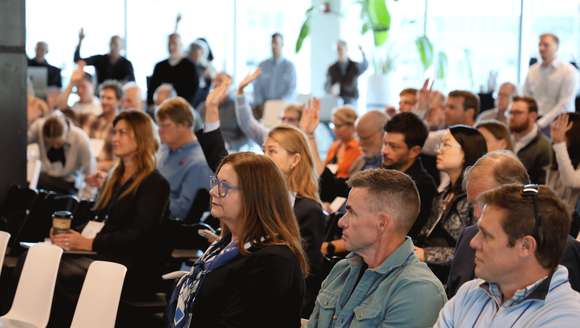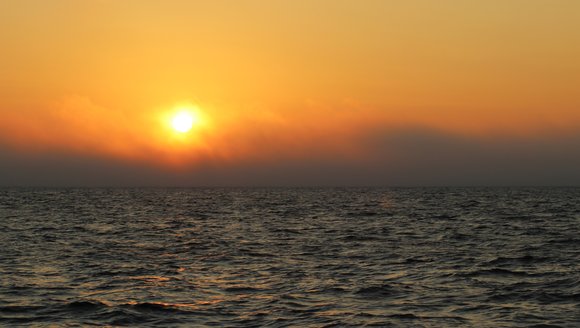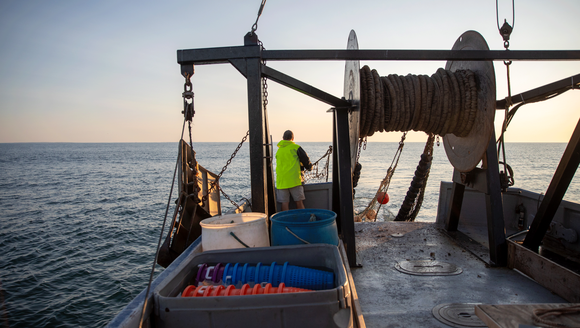Understanding Saltwater Intrusion
Addressing saltwater intrusion on aquaculture and coastal working lands.
Sea level rise, storm surges, and increasing precipitation are the three main drivers changing salinity levels in coastal waters. While Maine has several documented cases of residents and municipalities losing access to freshwater resources as a result of saltwater intrusion, we still have a lot to learn about how aquaculture farms and facilities, as well as coastal working lands, are impacted. This project seeks to better understand how climate-related changes in salinity in coastal waters affects aquaculture businesses and coastal working lands — and what they can do to respond.
Project Goals:
- Gain an understanding of how saltwater intrusion into fresher upriver waters and/or fresh groundwater sources is affecting aquaculture businesses and coastal working lands.
- Work with Maine’s aquaculture industry to understand how heavy precipitation events change salinity levels and affect shellfish growth and quality.
- Raise awareness of the vulnerabilities caused by changing coastal salinity and saltwater intrusion, in partnership with the USDA Northeast Climate Hub.
Saltwater intrusion is the process by which fresher upriver waters and/or fresh groundwater in coastal areas becomes increasingly saline. The main drivers of saltwater intrusion are sea level rise, which elevates the boundary between fresh and saltwater sources in the ground, and through flooding events that allow saltwater to percolate into fresh groundwater sources. Aside from contaminating drinking water, increasingly saline water in fresh-water systems can cause damage to infrastructure and crops, and affect the quality of manufacturing processes.
Because water desalination is an expensive technology to implement (and leaves a toxic saline waste), there is no easy solution for coastal businesses and farmers to implement when dealing with saltwater intrusion. We are working with aquaculture businesses and managers of coastal working lands to understand how saltwater intrusion is impacting, or will impact, their operations, so that they may be better prepared for potential disruptions in the future.
A related, but almost opposite, effect can also take place in near-shore waters during heavy precipitation events. With an observed trend of heavier rainfall events in the Northeast region that is projected to continue — and potentially increase as a result of climate change — near-shore waters face potential influxes of freshwater during, and in the wake of, heavy storm events. This rapid input of freshwater can not only affect salinity levels, but introduce nutrient and pollutant run-off into the coastal zone, that pose risks to the quality of shellfish production or, worse, can lead to temporary farm shutdowns and harvest prohibitions.
For each species of shellfish, there is an ideal set of conditions for growth and quality, which includes a preferred salinity range. While shellfish can tolerate conditions outside of their salinity range for short periods of time, understanding the frequency and duration of these disruptive events will improve the industry’s ability to continue producing high-quality shellfish.
Project Team
-
The Next Wave of Maine’s Blue Economy
Reflections from the 2025 Blue Economy Investment Summit, and the future of Maine's blue economy.
Perspectives
-
Demystifying the Blue Economy
The blue economy is a hot topic these days, but the meaning behind the term isn't always clear. In this blog, we break down what …
Perspectives
-
Fisheries 101
Fisheries are the backbone of our state's economy and cultural heritage, but these systems are complex, and managing them even more so. Read on for …
Perspectives
-
Sea State Recap: Building Climate Ready Communities
In this installment of the Sea State series at the Gulf of Maine Research Institute (GMRI), we hosted a timely conversation around supporting Maine communities …
Perspectives




